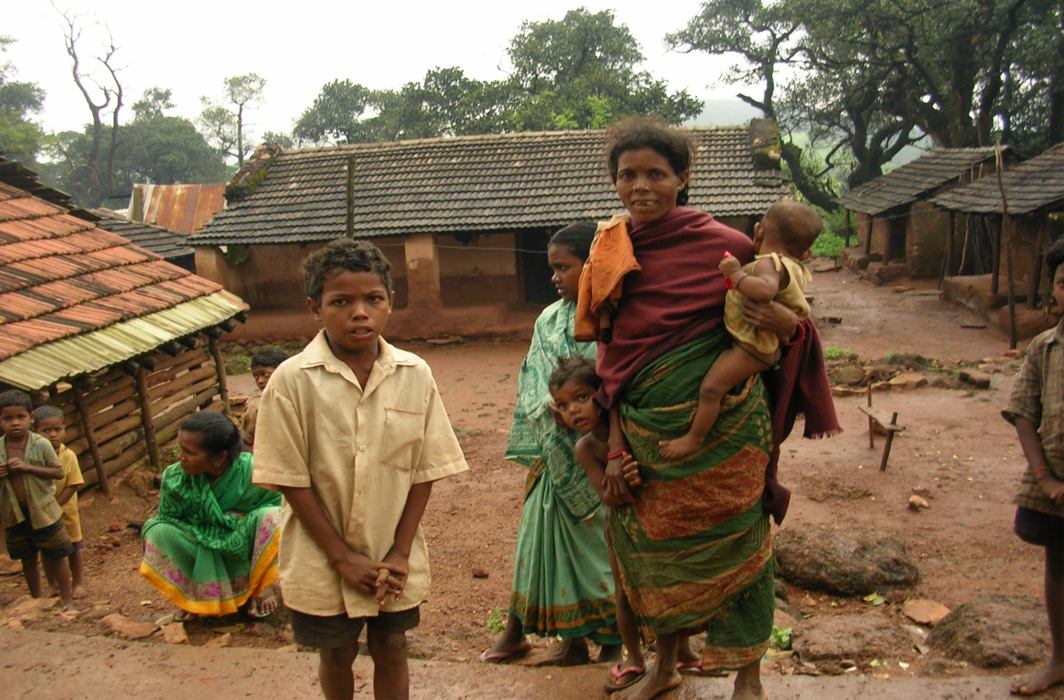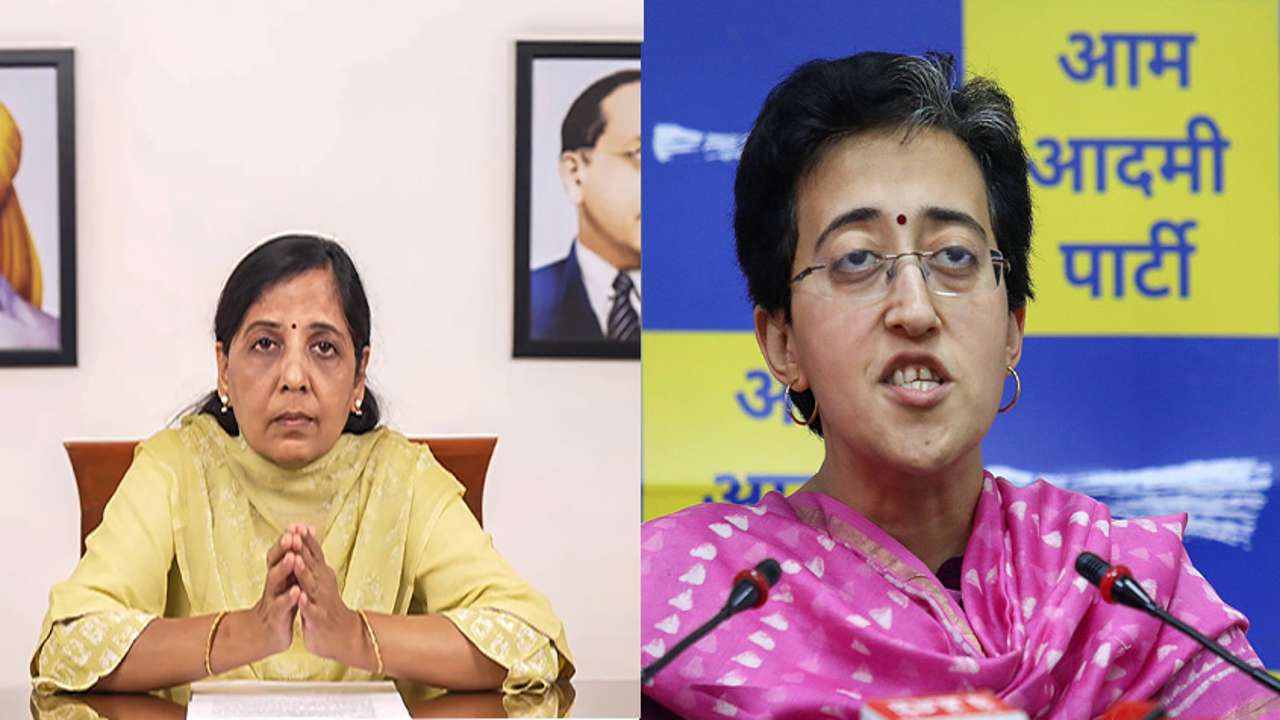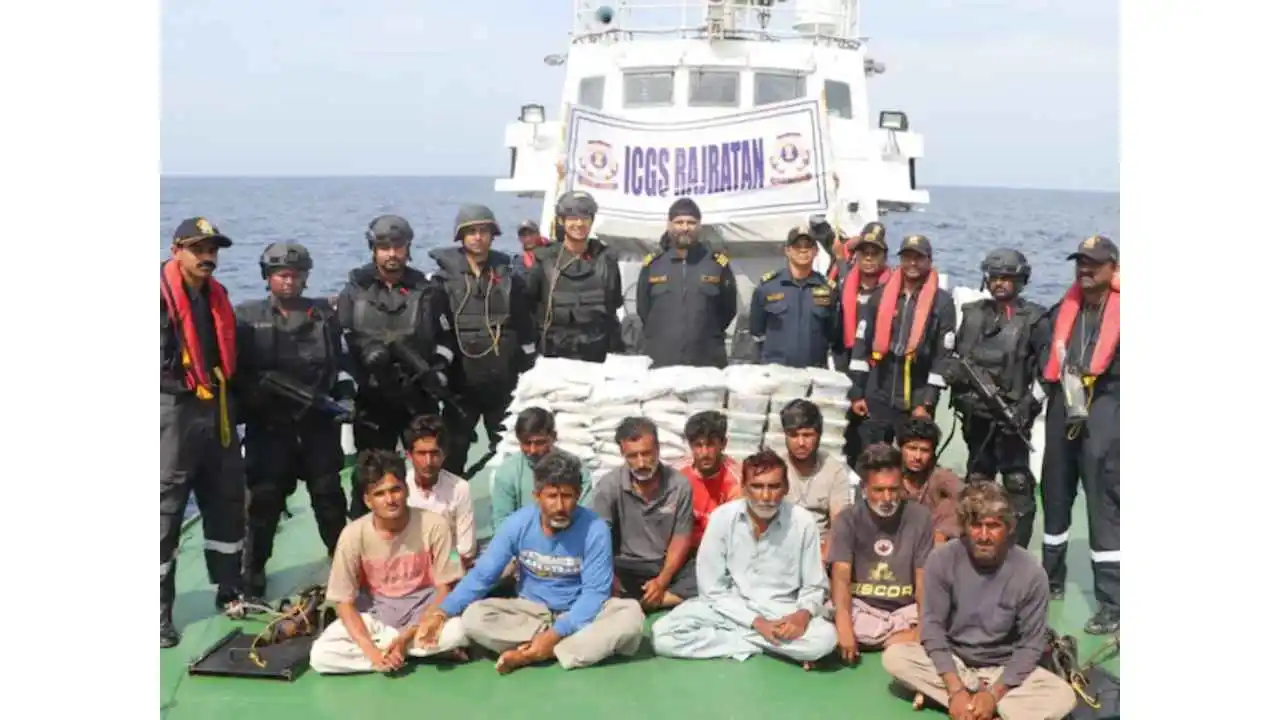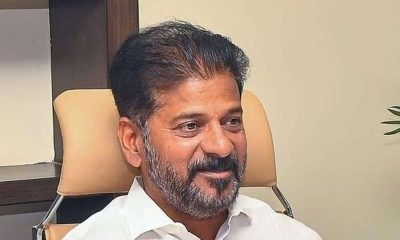India News
India pulled out over 27 crore out of poverty in a decade, halved poverty rate: UNDP

In one of the best news about India in several years, a UN report has said that India has halved its poverty rate from 55 per cent to 28 per cent in ten years.
The 2018 global Multidimensional Poverty Index (MPI) revealed that between 2005-06 and 2015-16, more than 271 million people have come out of the clutches of poverty in India.
Poverty reduction was fastest among children, the poorest states, scheduled tribes and Muslims.
The estimates were released by the UN Development Programme (UNDP) and the Oxford Poverty and Human Development Initiative (OPHI).
The report, however, stated that India still has the largest number of people living in multidimensional poverty in the world, pegging the figures around 364 million people.
The index evaluates poverty on three dimensions: health, education and living standards, with focus on access to clean water, sanitation, adequate nutrition and primary education. Those deprived in at least of a third of the index’s components are defined as “multidimensionally poor”. As many as 83% of the multidimensionally poor live in Sub-Saharan Africa and South Asia, the report said.
After India (364 million people), the countries with the largest number of people living in multi-dimensional poverty are Nigeria (97 million), Ethiopia (86 million), Pakistan (85 million), and Bangladesh (67 million).
The report also said India’s scale of poverty reduction has parallels with the phenomenal level of poverty reduction achieved in China a decade or so earlier.
“India’s scale of multidimensional poverty reduction over the decade from 2005/6 to 2015/16 – from 635 million poor persons to 364 million – brings to mind the speedy pace of China’s poverty reduction, which occurred over more than 20 years,” the report pointed out.
One of the striking findings is that 156 million out of 364 million people who are MPI poor in 2015/2016 are children.
The data noted that a change of global proportions occurred in India. Between 2005-06 and 2015-16, the number of multidimensionally poor people in India fell from 635 million to 364 million an historic shift.
Furthermore, in sharp contrast with the trend 1999 to 2006, when the poorest groups reduced multidimensional poverty the slowest, from 2005-06 to 2015-16 the poorest reduced MPI the fastest.
“That is, poverty reduction among children, the poorest states, scheduled tribes, and Muslims was fastest, indicating that, far from being left behind, they were catching up,” it said.
“India has made momentous progress in reducing multidimensional poverty. The incidence of multidimensional poverty was almost halved between 2005-06 and 2015-16, climbing down to 27.5 per cent,” it said.
It said that for the Scheduled Caste, the MPI fell from 0.338 in 2005-06 to 0.145 in 2015-16. For Other Backward Classes, the MPI fell from 0.291 in 2005-06 to 0.117 in 2015-16.
In the case of Muslims, the MPI fell from 0.331 in 2005-06 to 0.144 in 2015-16. For the Scheduled Tribes, the MPI fell from 0.447 in 2005-06 to 0.229 in 2015-16.
The data noted that the positive trend of pro-poor poverty reduction is seen also across religions and caste groups. In both cases, the poorest groups (Muslims and Scheduled Tribes) reduced poverty the most over the ten years from 2005-06 to 2015-16.
Yet these two groups still have the highest rates of poverty. For instance, while 80 per cent of those who identified themselves as being in a Scheduled Tribe had been poor in 2005-06, in 2015-16, 50 per cent of people belonging Scheduled Tribes are still poor.
Within India, 40.4 million people live in districts where more than 60 pe cent of people are poor 20.8 million live in the poorest districts in Bihar, 10.6 million in the poorest districts in Uttar Pradesh, and the remainder in the poorest districts in Chhattisgarh, Gujarat, Jharkhand, Madhya Pradesh and Odisha.
It noted that the landscape of the poorest has improved dramatically and, if current trends continue, is set to change.
The poorest groups across states, castes, religions, and ages had the biggest reductions in MPI 2005-06 to 2015-16, showing that they have been catching up, though they still experience much higher rates of poverty.
“This marks a dramatic reversal,” it said, adding that from 1998-99 to 2005-06 the opposite trend prevailed: India’s poorest groups had the slowest progress.
Among states, Jharkhand had the greatest improvement, with Arunachal Pradesh, Bihar, Chhattisgarh, and Nagaland only slightly behind. However, Bihar is still the poorest state in 2015/16, with more than half of its population in poverty.
In 2015/16, the four poorest states – Bihar, Jharkhand, Uttar Pradesh, and Madhya Pradesh – were still home to 196 million MPI poor people, or over half of all the MPI poor people in India. Delhi, Kerala and Goa have the lowest incidence of multidimensional poverty.
About 1.3 billion people live in multidimensional poverty globally, the report said. This is almost a quarter of the population of the 104 countries for which the 2018 MPI is calculated. Of these 1.3 billion, almost half – 46per cent – arethought to be living in severe poverty and are deprived in at least half of the dimensions covered in the MPI, it said.
The report observes that while there is much that needs to be done to tackle poverty globally, there are “promising signs that such poverty can be – and is being – tackled.”
“Although the level of poverty particularly in children is staggering so is the progress that can be made in tackling it. In India alone some 271 million have escaped multidimensional poverty in just ten years,” UNDP Administrator Achim Steiner said.
The global MPI is an internationally comparable measure of acute poverty for over 100 countries situated in developing regions. It complements global monetary poverty measures by capturing the simultaneous deprivations that each person experiences in ten indicators related to education, health and living standards. In 2018, five of the ten indicators have been revised.
The global MPI was first developed in 2010 by the UNDP and OPHI at the University of Oxford for the UNDP flagship publication Human Development Report.
India News
Sunita Kejriwal, Atishi meet Arvind Kejriwal in Tihar jail, discuss Delhi governance
AAP had earlier accused the Tihar jail administration of cancelling Sunita Kejriwal’s meeting with Arvind Kejriwal.

Delhi Chief Minister’s wife Sunita Kejriwal and AAP minister Atishi met Arvind Kejriwal in the Tihar Jail today. After their meeting, both dicussed the specifics of their meeting with CM. They said that the jailed CM was asking about the Delhi governance matter.
Kejriwal is expected to see Punjab Chief Minister Bhagwan Mann tomorrow.
Atishi, who is in charge of six departments in the Delhi Cabinet, said, she visited with the Chief Minister. When she asked how he was doing, he skipped answering her, rather he asked how the work is going in Delhi. He said, not to ask about his condition. During their meet, the Delhhi CM also asked about the school kids that are they getting books? Does Mohalla Clinic have access to medications? Atishi continued.
The Chief Minister said that as summer is approaching, Delhi shouldn’t have any water-related issues. He sent a message to the women of Delhi, saying he is planning to give them Rs 1000.
The Aam Aadmi Party had earlier claimed that Kejriwal’s wife, Sunita Kejriwal, was not allowed to see him. However, in a statement, Delhi minister Atishi said that Sunita Kejriwal will see her husband later on in the day and that two people were granted permission, but Sunita ji’s was cancelled. Athishi said, every day, new laws are enacted, she did not have permission, but when their lawyers won this legal battle, she was permitted to see Kejriwal.
AAP’s campaign for the Lok Sabha in the national capital and other states will be led by Mrs. Kejriwal, the party said. The campaign kicked off with a roadshow to support AAP’s candidate for East Delhi, Kuldeep Kumar. This is the first time that Mrs. Kejriwal has entered the political sphere actively.
Party leader Sanjay Singh asserted last week that Atishi’s name was added to the list of visitors for Mr. Kejriwal following the name of Delhi Health Minister Saurabh Bharadwaj.
Meanwhile, in the Delhi Liquor Policy case, Arvind Kejriwal was taken into custody in March. On March 21, the Enforcement Directorate (ED) detained him in connection with a money laundering case. In the same case, Manish Sisodia, his former deputy, is jailed.
India News
FIR filed against YouTube channel in Punjab for defaming AAP MP Raghav Chadha
The case was filed on the complaint of the son of an AAP candidate from the Ludhiana Lok Sabha seat.

A First Information Report (FIR) has been filed by Punjab Police against a YouTube channel for allegedly linking Aam Aadmi Party (AAP) MP Raghav Chadha to wanted man Vijay Mallya.
The AAP candidate for the Ludhiana Lok Sabha constituency, Ashok Pappi Prashar’s son, Vikas Prashar, filed a formal complaint against the YouTube station Capital TV. The complainant held the channel accountable for airing misleading and defamatory content.
The statements/contents of false videos on Capital TV channel and others shall harm the public peace and harmony…and is likely to promote enmity between different groups in the country on grounds of religion, caste, race and community, the complaint said.
In his complaint, Vikas allegedly claimed that the YouTube channel was disseminating misleading information and that it was defaming Raghav Chadha by equating him with Mallya.
Vijay Mallya fled to the UK after taking public money, and similarly, a Rajya Sabha member left for England, claiming it was for eye treatment, according to the FIR, which noted claims made by the YouTube channel.
The AAP leader will reportedly get a vitrectomy in the UK to save the retina from detaching from the eye earlier. According to the research, this disorder, which is characterized by the formation of tiny holes in the retina, is very dangerous for vision and must be treated immediately to prevent irreversible damage.
The channel referred to Chadha as a Khalistani supporter following his encounter with UK MP Preet Gill, according to the complaint.
Section 153A of the Indian Penal Code (IPC) deals with inciting religious hatred among various groups, Section 469 deals with forgeries, and Section 505 deals with making statements that could incite public disturbances.
The FIR also contains Section 66 of the Information Technology Act, which addresses offenses involving computers.
India News
Security forces arrest 14 Pakistani nationals with around 86 kg of drugs, worth Rs 600 crore near Gujarat Coast
The Indian Coast Guard took to X and wrote in a breathtaking overnight operation, Indian Coast Guard undertook an intelligence-based anti-narcotics operation at sea on 28 Apr 24. About 86 kg of narcotics which is worth Rs 600 crore has been apprehended along with the arrest of 14 Pakistani nationals.

The Indian Coast Guard on Sunday announced the interception of a Pakistani vessel laden with 86 kg of narcotics valued at Rs 600 crore. Acting on intelligence, a joint operation involving the Indian Coast Guard, the Anti-terrorism Squad (ATS), and the Narcotics Control Bureau (NCB) was launched to combat drug trafficking in the area.
The operation was carried out by the agencies based on intelligence inputs received in the last few days. The Indian Coast Guard took to X and wrote in a breathtaking overnight operation, Indian Coast Guard undertook an intelligence-based anti-narcotics operation at sea on 28 Apr 24.
About 86 kg of narcotics which is worth Rs 600 crore has been apprehended along with the arrest of 14 Pakistani nationals. The operation was an epitome of inter-agency coordination wherein the Indian Coast Guard Anti-terrorism Squad and Narcotics Control Bureau collaborated seamlessly which resulted in the successful operation.
The ships and aircraft of the Indian Coast Guard had been deployed on concurrent missions to carry out the operation. ICG ship Rajratan, which had Narcitics Control Bureau and Anti Terrorist Squad officials embarked, positively identified the suspect boat.
No amount of evasive maneuvering tactics and resistance employed by the drug laden Pakistani boat could save it from the swift and strong action of ICG ship Rajratan. This operation took place on the basis of a tip-off by the Indian Coast Guard, Narcotics Control Bureau and Gujarat Anti-Terrorist Squad in the Arabian Sea near the International Maritime Boundary Line.
The operation was the 2nd major anti-narcotics operation carried out by the security forces in the Arabian Sea in 1 month. Earlier on February 26, 5 foreign nationals were held off the Porbandar coast with 3,300 kg of narcotics, including charas. Recently a boat carrying 60 packets of drugs was seized and 6 Pakistani crew members onboard the vessel were arrested off the Gujarat coast in a multi-agency operation in March.
-

 Entertainment24 hours ago
Entertainment24 hours agoLaapataa Ladies OTT release : Social media praises Kiran Rao’s film, says simple yet impactful
-

 Latest Politics News23 hours ago
Latest Politics News23 hours agoDelhi Police summons Telangana CM Revanth Reddy in Amit Shah fake video case
-

 Latest Politics News7 hours ago
Latest Politics News7 hours agoAmit Shah slams Congress over fake video, plays out actual video, says BJP supports reservation
-

 Entertainment5 hours ago
Entertainment5 hours agoIbrahim Ali Khan makes Instagram debut, first post goes viral
-

 Latest Politics News5 hours ago
Latest Politics News5 hours agoKarnataka MP Prajwal Revanna suspended from JDS over sex scandal
-

 Cricket news1 hour ago
Cricket news1 hour agoRohit Sharma to lead India at ICC Men’s T20 World Cup 2024, Hardik Pandya to be vice captain

